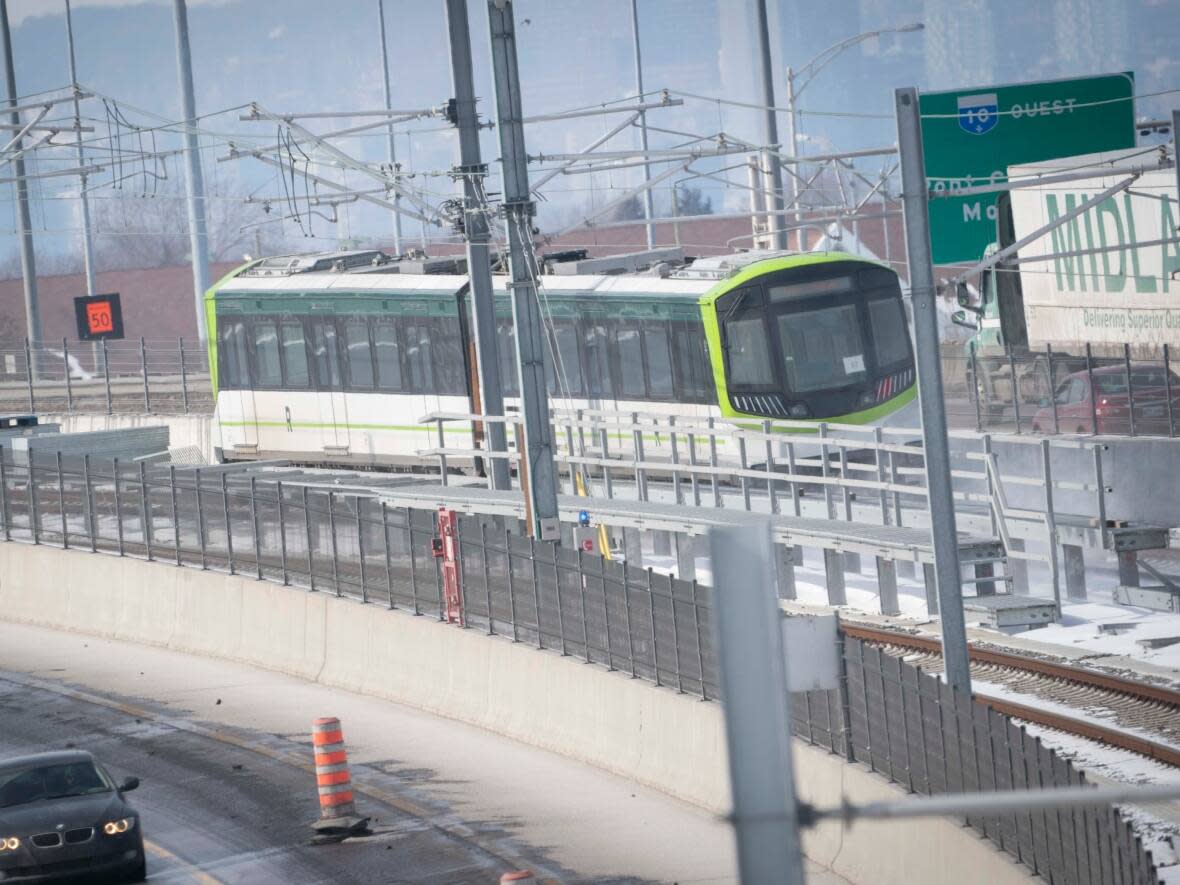Testing Montreal's new light-rail network is already making too much noise, residents say

The clock is ticking down on the official launch of Montreal's new light-rail network, and while many commuters are ready to roll, residents near the tracks are worried about the noise they've been hearing during test runs.
Among them is Chantal Alvaer, who said, "usually, I hear all the trains and I thought this one would be quiet, but it is a bit noisy."
Alvaer's condo is on the 20th floor in a building beside the train tracks. Since testing has started the noise is more present.
Alver said hearing so much noise during tests is particularly worrisome because soon the wagons will be passing every two minutes.
"We really hear it for a long period since it's a long distance," she said.
The Brossard to downtown line should be up and running sometime this spring.
Construction of the Réseau express métropolitain (REM) has taken longer than expected, and the exact date of opening has yet to be announced. The link to the South Shore will be the first section to open, but the REM will eventually run through the West Island and beyond.
The trains will be operational 20 hours a day. And during rush hour there will be four cars instead of two.
Jules Duchastel says the train makes a hissing sound. He's dreading hearing it 20 hours a day.
"It's terrible. It's terrible," Duchastel said.
Duchastel and his wife, who live on the canal, took it upon themselves to write a complaint.
"The REM is coming out of this first segment and it's going up a hill and it's very, very noisy and we hear the noise until it goes past Costco," said Duchastel.
In a statement, REM officials say they have already integrated concrete measures to reduce noise, such as welded rails and cushion support under the tracks.
CDPQ Infra spokesperson Emmanuelle Rouillard-Moreau said cumulative sound modelling of the REM car passage for a 24-hour period, in accordance with the existing regulatory framework, for all sensitive areas of the route has been performed.
That modelling identified areas that would be affected by noise.
"In these cases, we proceeded to implement mitigation measures, such as the installation of noise barriers," she said.
In Griffintown, she added, "we are aware of the situation and our community-relations team has been in contact with local residents on the subject of noise from passing cars."
After hearing from residents, Rouillard-Moreau explained, a noise measurement campaign will be launched.
"This new campaign will provide additional data that will allow us to draw up a portrait of the situation related to the passage of cars," she said. "We will then be able to determine if additional measures should be taken, depending on the results obtained."


